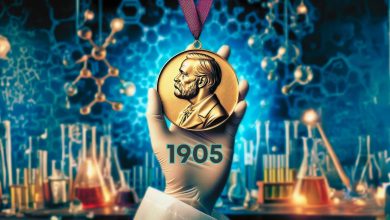If I Subtract Myself From Myself, Will It be Zero? Psychology and Spiritualism

In this article, we will start by trying to understand what makes something alive. Next, we’ll take the case of a scientist who goes mad while trying to contact the spirit of his brother after his untimely death. We will talk about a spirit communication club that includes famous people such as Charles Dickens and Sir Arthur Conan Doyle. In addition, after getting to know a doctor who claims that the soul is 21 grams, we will host a famous scientist who did not believe in the atom because he did not see it. Happy reading 🙂
What Makes Something Alive: The Spirit
For thousands of years, people have been asking themselves this question. What makes something alive? Socrates, one of the first philosophers, answer the question of “What is in a body and makes it alive?” as “a soul”. Aristotle also believed in the existence of a soul, similar to Socrates, but claimed that these souls had different degrees. The lowest grades were those of plants, providing their nourishment and growth; One level higher were animal spirits that gave their owner the ability to feel and move, but only the human spirit offered logic and reason.

Similarly, the Ancient Chinese believed that what gives life to living things is an incorporeal vital force called Qi (chi) flowing through them. Later, the concept of the soul was included in almost all religions with minor changes.
In most cultures, there is a belief that the body is mortal but the soul is immortal. The idea that the soul would continue to live after the body died gave rise to the possibility of communicating with it.
Most Popular Field of an Era: Psychology and Spiritualism
One of the most important studies on the science of the soul belonged to William Crookes. He was born in 1832 as the eldest child of a family of 16 children. Crookes was a highly prestigious scientist working in London on elements such as selenium and thallium.
Until his brother’s death at sea in 1869. After this incident, the family began to go crazy with grief, so to speak. At that time, the movement of spiritualism that came from America, that is, the movement of communicating with spirits entered the houses of aristocrats and shopkeepers in England. The Crookes family began attending Ouija sessions to talk to their deceased child.

As we all expected at the beginning, a successful scientist like William Crookes interpreted these sessions as “unscientific” and even “fraud”. However, as he watched the psychic play the accordion hands-free and write “automatic messages” on a board with a needle, the skeptical human inside began to be suppressed. The opposition waned, and astonishment began to rise from Crookes as the psychic relayed humming messages from Philip in the afterlife.
He continued to attend the sessions, and as if that wasn’t enough, he invented a scientific device to monitor the hum of spirits that roamed the candle-filled rooms. It was the new radiometer in the form of an evacuated glass bulb with a very sensitive weather vane inside. This radiometer is the ancestor of the radiometers that we see today in physics laboratories, which have a white wing and a black wing, which are used to measure the intensity of light.
The Creation That Brings Crookes, Dickens, and Doyle Together: The Ghost Club
Crookes’ efforts to get to know the spirit world was increasing. In 1870 he announced that he was preparing a scientific work on spiritualism.
Crookes, who sang hymns and attended meetings for three years, published his article “Review Notes on the Phenomenon Called Spiritual” in his Quarterly Journal of Science in 1874. He saw himself as the Marco Polo of the paranormal, a traveler in exotic lands, as Sam Kean put it.
Crookes had obtained tangible ‘data’ about temperature and pressure in the psychic’s shelter, such as that spiritual beings would not go out in cold and harsh weather.

William Crookes had suddenly become the leader of the people who believed in spirit communication. They even continued to work on this issue through an organization called Ghost Club. Of course, the scientific community said it was just nonsense.
This may sound quite unscientific and illogical today, but back then it was considered normal. Even people like Charles Dickens, one of the world’s most widely read authors, and Sir Arthur Conan Doyle, who created the ultra-rationalist detective Sherlock Holmes, thought there was sincerity in spiritualism and became members of the Ghost Club.
If I Subtract Myself From Myself, There Will Be No Zero!
Another interesting and quite famous study on the science of psychology belongs to the American physician Duncan MacDougall. And quite recently, in 1907. This physician declared that he weighed his patients just before and immediately after death and weighed the soul. As a result of his experiments, he observed that there was a difference of exactly 21 grams between the dead body and the living body. The physician thought it was the weight of the soul leaving the body.

Although this knowledge spread across popular culture, it was not a tangible result for the scientific world. First of all, the American physician did this experiment on only 6 dead, and no mass change was observed in 5 of them. In order to accept something in science, it was necessary to do it over and over and get the same result, but this was not the case for this doctor’s experiment.
In addition, when he did the same experiment on 15 dogs, he observed that there was no decrease in mass, and then he reached the absurd conclusion that “dogs do not have souls”. Our excretory system will give the most logical answer that can be made for the mass change in that subject. When a person dies, the bladder and rectum inevitably relax and urine and feces come out. This is quite normal and expected. This would be the most logical interpretation that comes to mind for this mass reduction.
A Completely Contrasting View: I Can’t Believe Without Seeing!
As we mentioned in the article, some scientists believed that abstract concepts such as the soul were real and tried to use the power of science to prove them. Besides, there are famous scientists who have completely opposite opinions. However, there is a scientist who exaggerates even in opposition and makes you say, “that was dramatic”. This scientist is Mendeleev, the inventor of the modern periodic table.

Mendeleev attached importance to reality so much that for a while he even refused to believe that atoms existed. Although it seems so pointless to us now, it was not uncommon for physicists and chemists at that time to reject atoms. In addition to refusing to believe what they could not see, these scientists also saw atoms as an abstraction, merely fictional concepts used for computation. In fact, Mendeleev later rejected other things he could not see, such as electrons and radioactivity, by saying “There is no such thing, get it out of your mind”.
Let’s get to the point: Is there a soul or not?
The concept of the soul, though no longer found in modern science, has at least separated the realms of the living and the non-living. In fact, it has enabled research into the causes of motion in inanimate objects.
Later, wanting to further this distinction, Isaac Newton would become the pioneer of classical physics, which is now called Newtonian mechanics, by making extraordinarily successful mathematical descriptions of how the motion of inanimate objects can be changed by force.
As we have seen, Crookes invented the radiometer, enabling us to have information about the intensity of light, thanks to his soul research which is more a subject of philosophy or theology than science. Or indirectly, by providing a barrier between the living and the inanimate, it contributed to the establishment of classical physics by scientists such as Galileo and Newton, who researched how inanimate objects move. In summary, although the existence of the soul is not the subject of science, it has helped to establish very important foundations for science.
References and Further Reading
Bakirci, C. M. (2019, August 31). Spirit and Mass: Do We Lose 21 Grams of Mass When We Die? Evolution Tree.
https://evrimagaci.org/ruh-ve-kutlesi-oldugumuzde-21-gram-kutle-kaybeder-miyiz-762.
Kean, S. (2011). The disappearing spoon and other true tales of madness, love, and the history of the world from the periodic table of the elements. Black Swan.
McFadden, J., & Al-Khalili, J. (2016). Life on the edge: The coming of age of quantum biology. Broadway Books.
Images not cited are used through Canva Pro with a royalty payment.
The proofreading has been done by Asu Pelin Akköse and Mete Esencan.
Would you like to support us?
- For more detailed information, you can check our “Support Us!” page!







